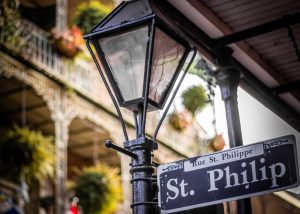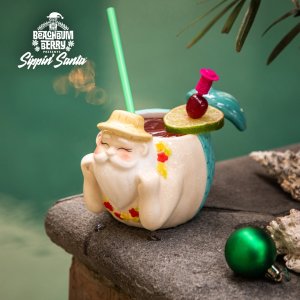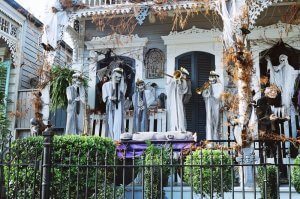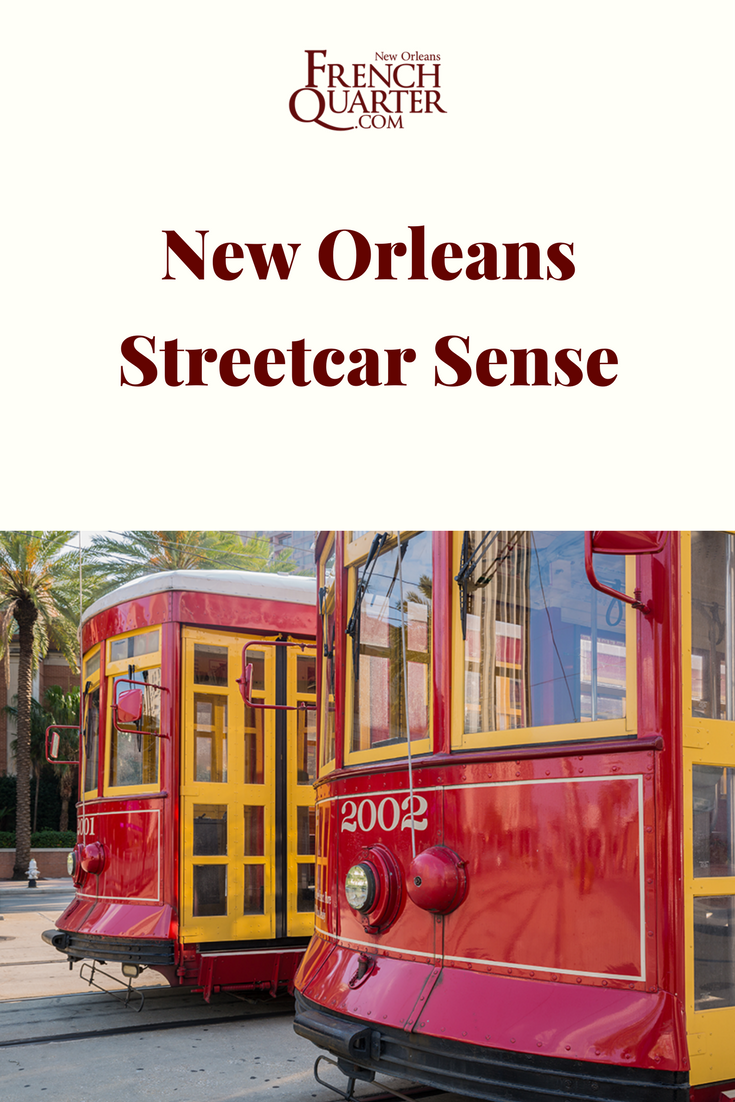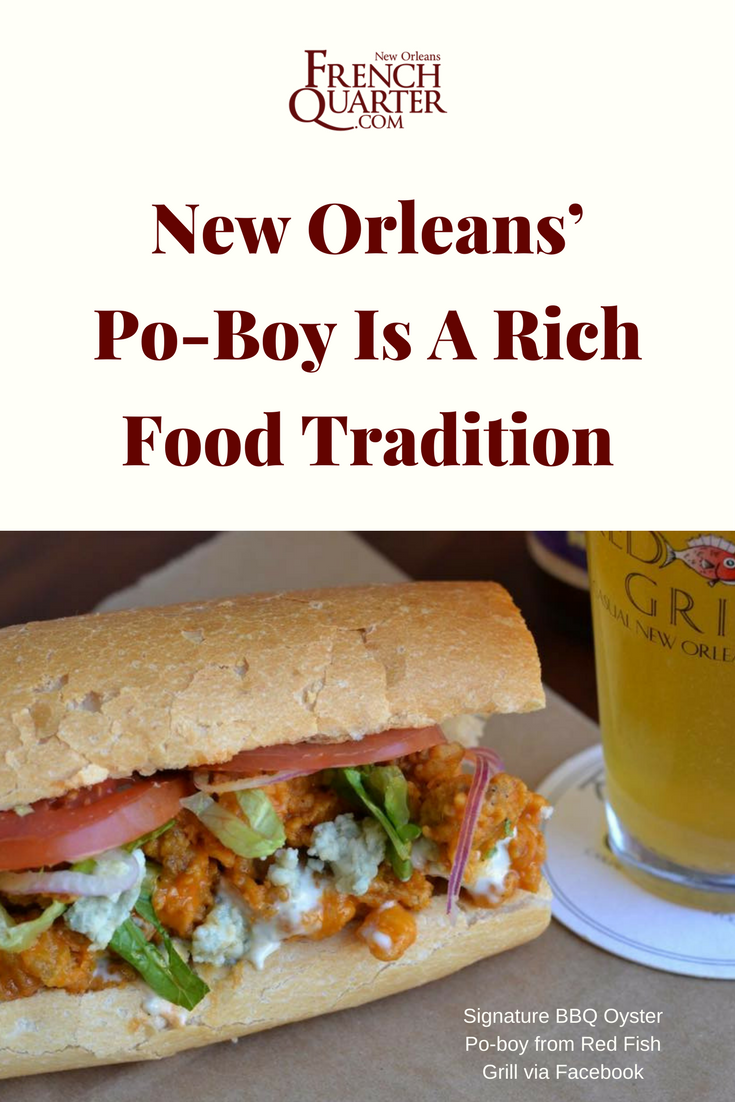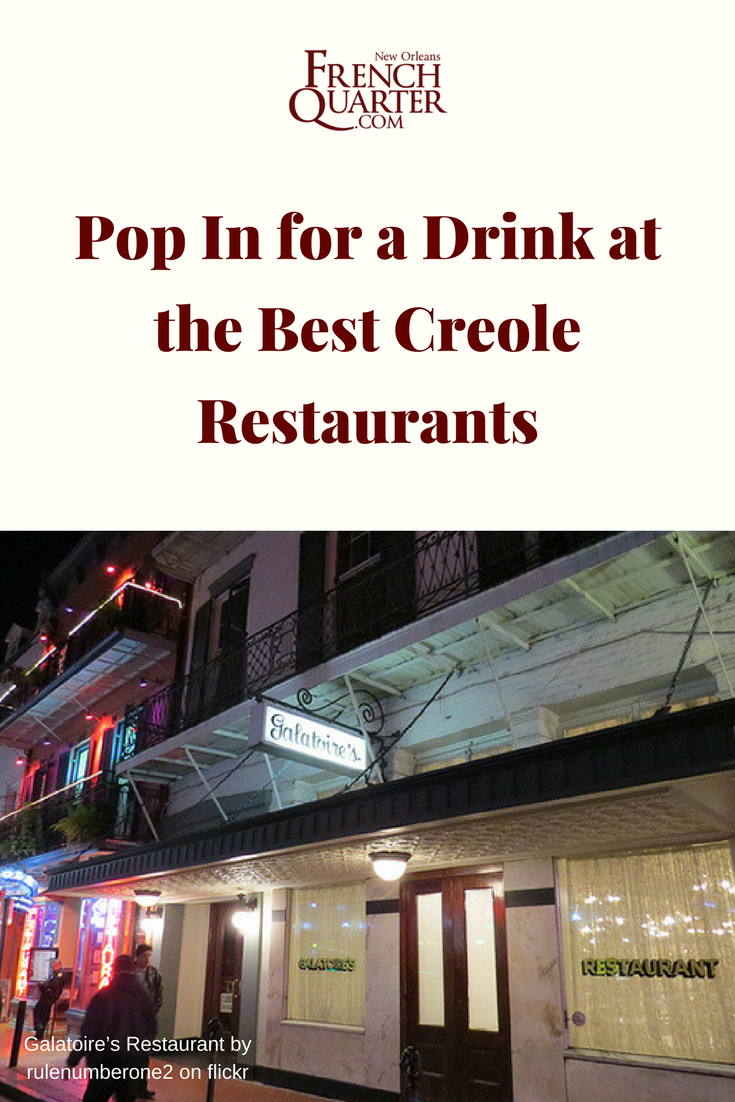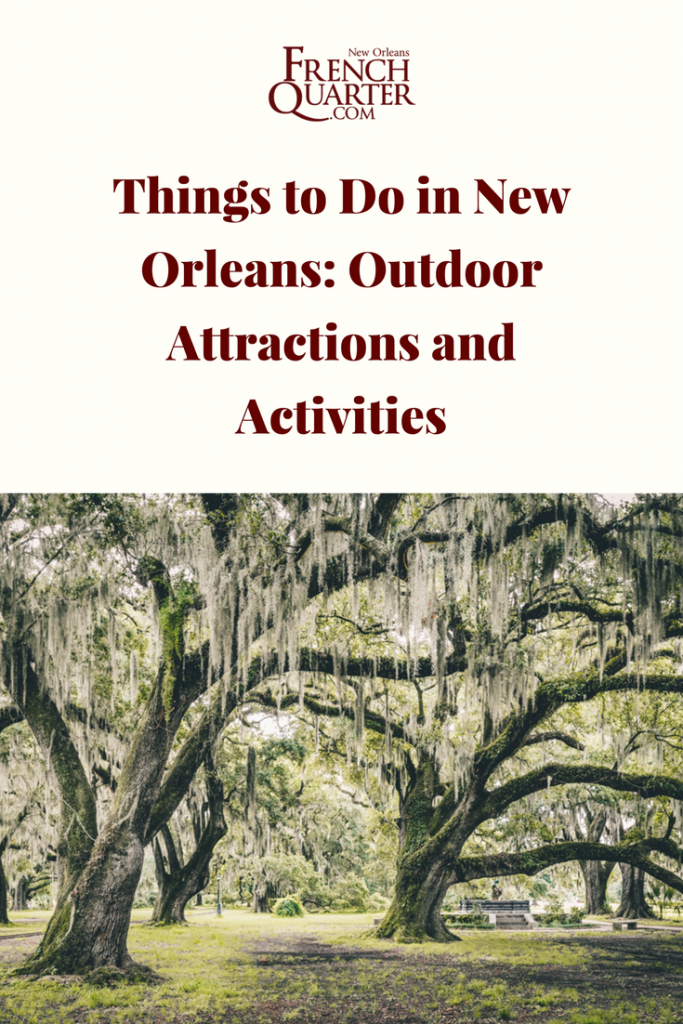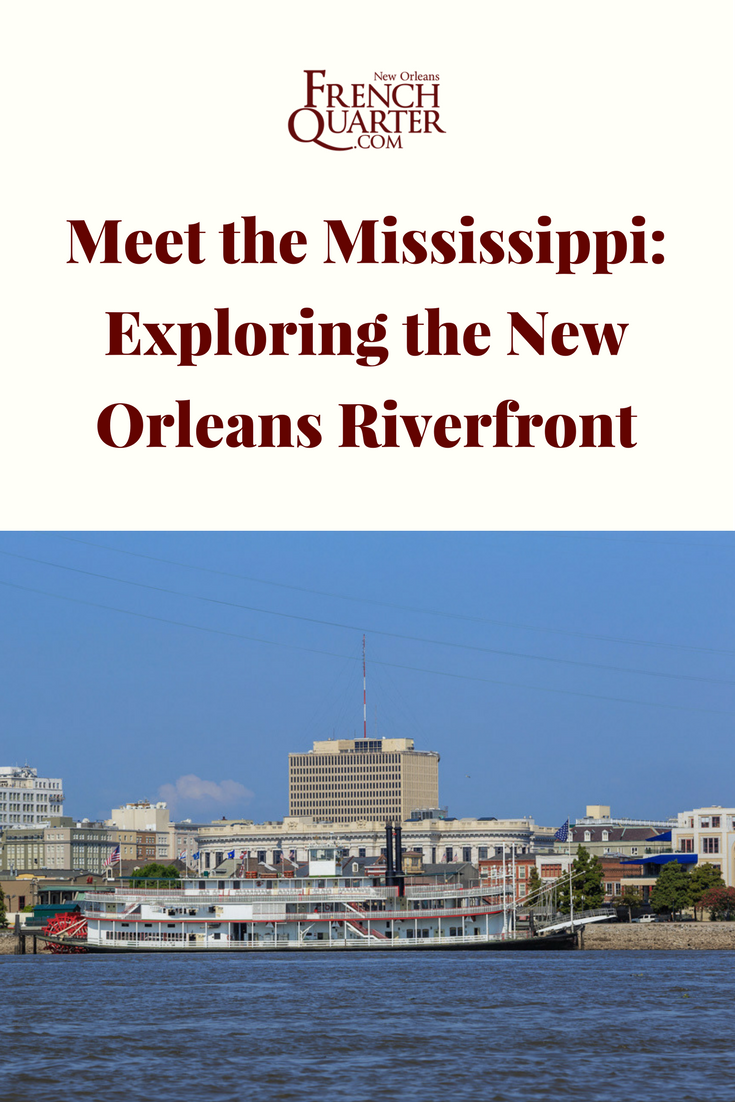Guide to How to Plan a Second Line Parade in New Orleans
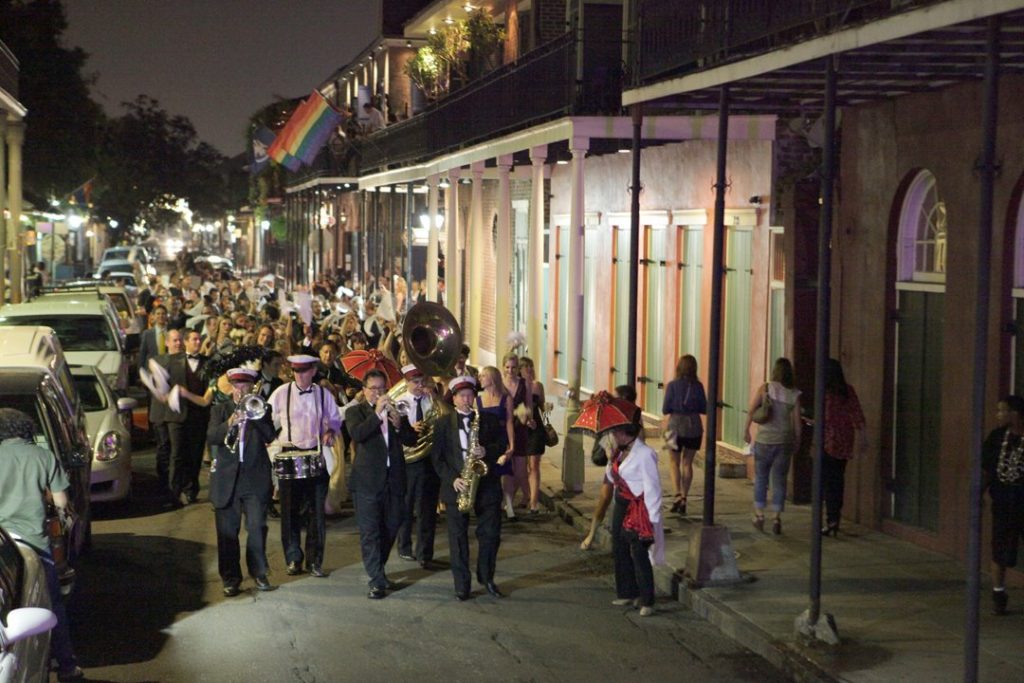
Photo courtesy of Jazzman Entertainment on Facebook
Second lines are our pride, joy, and what makes us unique. You don’t have to be dead and/or famous to get a second line parade. You don’t even have to live here. Organizing a second line is not hard, though it requires a few hundred dollars and some advance planning. Some things, like acquiring a police escort or a permit from the City of New Orleans, are not optional. Others, like throwing beads or twirling parasols while you strut, are up to you to add on or to skip.
You can organize a second line by either doing it yourself or by using a full-service company that would plan and coordinate on your behalf. The DIY approach is an attractive option if you don’t mind filing the paperwork yourself, know exactly what you want, and have a limited budget.
Jazzman Entertainment has been organizing second line parades for over 20 years, including ones for weddings and bachelor/bachelorette parties. Jerry Embree, the Director, notes the increase in interest in second line parades.
“In the last three years I’d say we average about 100 parades a year,” he says. “That’s just our band.” Embree plays in several, and Jaywalkers is his second line band. He describes it as “not the cheapest band but not the most expensive either.” Jaywalkers come with a grand marshal, who won’t only dance-lead the parade but will coordinate the event.
Outsourcing the detail coordination and knowing what to expect are two points in favor of using a full-service company. For example, Embree points out that his band always offers to play for up to an hour. Some bands that are hired directly, he notes, might only stay for 20 minutes or so. Since the police escort time booked is 45 minutes max, you may want the band to stay for an hour. “Four events a day is our limit,” he says.
So, how viable is it to do everything yourself? “You certainly can do it yourself,” says Embree, “but I think the reason we get a lot of our gigs is because we offer that service… It’s not that it’s hard, but you have to deal with two different departments… One for the permit and another for the detail cops… Most people consider that service charge to be a bargain for that.”
This would also involve hiring the band directly, plus the grand marshal, and any additional musicians, costumed revelers, dancers, and stilt walkers. If you want accessories like parasols, handkerchiefs, beads, or any other throws, they would also need to be purchased from a local vendor or online (parasols could be rented). Finally, if you want to customize the handkerchiefs, go-cups, or any other throws with your name and the date (people often do, especially for weddings), you’ll have to coordinate that too with one of the local companies.
Leaving everything to a professional would cost more but would save you a lot of hassle, especially if you are coordinating your event remotely.
“I would say about 75% of our business is out-of-town clients,” says Embree, also noting, “We’ve done some international weddings.”
Some local companies offer both standard packages and customized options. Either way, they do all the planning for you. Here we explain your options for both the DIY and the outsourcing approaches.
Do It Yourself
-
File the paperwork
Determine the date, the route, and the number of participants. You will need this information for the permit application.
Fill out two applications: the Master Special Event Permit Application and Parade Permit Application (Supplement C). The applications must be submitted at least 15 days prior to the event, but the City of New Orleans recommends filing 90 days in advance.
According to the City of New Orleans:
“In New Orleans a Parade Permit, Police escort and City Permitting tax/fee are required for any/all events parading in the streets…
Any cancellation must be done a minimum of two (2) hours prior to the event. Less than two (2) hour notification means that all police fees shall be forfeited for that date…
The parade route, along with the size of the parade, will determine the number of police officers needed for the parade escort. You will consult with the Special Events Commander about the rest of the details and any additional documents needed.”
Some additional paperwork may be required:
— Supplement B: Street Closure/Block Party — If you plan to tow cars from your route or purchase meters
— Supplement G: Safety and Security — If you have any fire-related activity during your parade/race
— Plan/contract to dispose of all waste
You can find all the fees listed here. A parade permit is $200.25 ($100.25 for nonprofits), minimum escort fee is $384.97, but may be higher depending on the length of the route and the parade elements (pyrotechnics, for instance).
For parades with fewer than 200 participants, two officers (usually on a motorcycle) are riding first, and a squad car rides last closing the parade. If you have more than 200 participants more police officers will be required. Police escort fees are structured by the police officers’ rank, number, and whether it’s a holiday. The hourly rates are listed here.
Submit the paperwork at least 15 days prior to the event date to One Stop App, City Hall, 7th floor, 1300 Perdido St., New Orleans 70112.
You can find all applications and descriptions of procedures in the City of New Orleans’ “Special Event Permit Guide and Applications.”
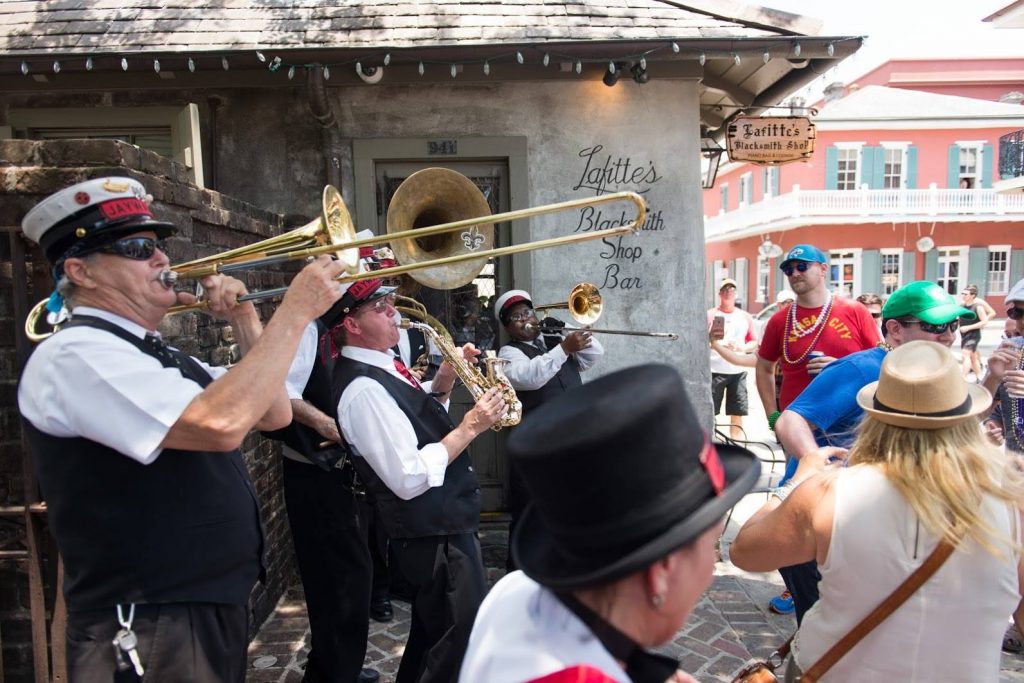
Photo courtesy of Jazzman Entertainment on Facebook
-
Hire the band
Many local bands are available for hire for a second line, even the world-famous ones that play regular gigs and tour. The fees and availability depend on how established and in demand the band is, but it doesn’t hurt to ask. Some bands, like Storyville Stompers and Panorama Jazz Band, do a lot of second lines.
Panorama, which specializes in klezmer, offers two variations, the 6-7 piece jazz band and 8-10-piece brass band. The fees for both, just to give you an example, are listed as $2,500 for two hours and $500 for each additional hour. In general, band fees vary greatly depending on the time of the week (higher on weekends), the season, and the band’s availability and popularity.
If you’re lucky you may snag one of these excellent choices: Egg Yolk Jubilee, Hot 8 Brass Band, the Dirty Dozen Brass Band, or the all-women Original Pinettes Brass Band. Another option is to look into hiring a high school brass band, they’re likely to command a lower fee.
-
Get the accessories and personalize
Most second lines just do with white handkerchiefs and a few parasols, but you can certainly get throws like beads and go-cups. You can personalize those for your second line by custom-printing your initials, for example, or the date of the event.
These local vendors offer the accessories and/or can custom-design to your specifications:
Backyard Printing and Second-line Handkerchiefs
... Or Leave It to the Pros
This option will cost more but it may be worth it to save time and to skip all the steps to the fun part — showing up for your parade. For example, Kinfolk, the local brass band, won’t just walk in your parade but will do full-service parade planning for you: helping you plan the parade route, securing the required permit and three police escorts, and coordinating on-site. They’ll also rent the parasols and will help you get customized accessories. You can also add a grand marshal, dancers, and even Mardi Gras Indians to your parade.
How much in advance should you book the full-service company? “Book your band a year out if you can, or at least six months out,” advises Embree. “We don’t normally book more than 365 days out,” he says, but “we do a lot of bookings six to eight months out.”
Last minutes bookings are OK, too, he says, though not for weddings. Embree says he gets quite a few bookings less than a month in advance, and it could work for bachelorette and bachelor parties.
Timing is essential because so many elements must come together. “The biggest frustration is when the client wants to change the details after we’ve already booked six musicians, three cops, and got them a permit, and now they want to change the time by an hour or 30 minutes,” says Embree. “It’s not always possible.”
However you want to get there, walking in a second line parade will be worth it. “It’s a once-in-a-lifetime opportunity, don’t pass it up,” says Embree (the glowing feedback and the pictures back it up).
Embree says: “One recurring comment is, ‘Oh my god, that’s the most fun I’ve ever had in my life!’ We get that a lot. I mean, you’ve got cops blocking the street, you feel like a big shot. Everyone is videotaping you, you got your own private band… You feel very important. It’s just a lot of fun.”
If you’re planning a trip to New Orleans, be sure to head over to our French Quarter hotels page to find the perfect historic boutique hotel for your stay.
Related Articles
JOIN THE NEWSLETTER!
New Orleans Streetcar Sense
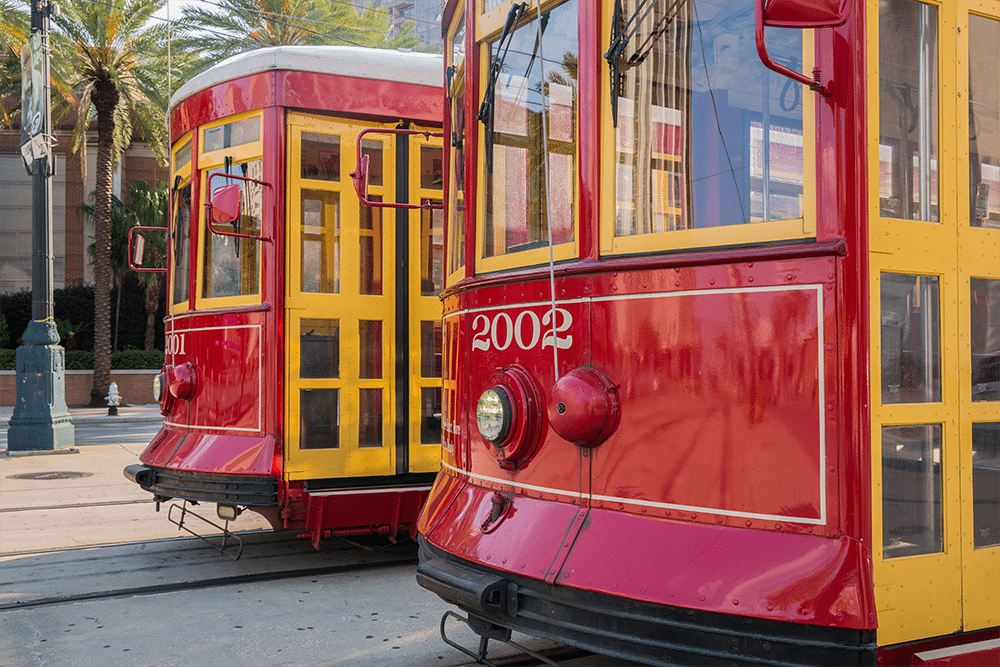
In 1947, Tennessee Williams penned “A Streetcar Named Desire,” effectively immortalizing the public transit line that, from the 1920s, served the rollicking French Quarter as well as the working class Marigny and Bywater neighborhoods, located downriver.
Sadly, the last car to serve the Desire line rattled through town in 1948, a victim of transportation “progress.” It was replaced by a choking diesel bus, which lacked the aesthetic value of the streetcars. Where 235 miles of streetcar tracks once formed a lace across the city’s streets most of the tracks were ultimately paved over, as noxious buses became the standard.
Blessedly, even the Purveyors of Progress could not bear to dismantle the charming St. Charles Avenue streetcar line and its service has remained uninterrupted since its inception in 1893. Spacious olive green 900-class streetcars built by Perley A. Thomas Car Company in 1923-24 still serve the line today. These cultural icons were fully restored and refurbished between 1988 and 1994.
The Historic St. Charles Avenue Line
The St. Charles Avenue Streetcar may very well be the nation’s most pleasant form of public conveyance existing today. The line was named to the National Register of Historic Places in 1973. To maintain this stature, the Regional Transit Authority, which operates New Orleans’ streetcar system, has rejected adding air conditioning and making the streetcars wheelchair accessible. However, the 46 streetcars’ double-hung windows can easily be opened to emit the cooling breezes generated by the moving cars so it’s always a comfortable ride.
For a leisurely exploration of the Central Business District, the Garden District and Uptown, visitors staying in the French Quarter should board the St. Charles Avenue streetcar at the corner of Carondelet and Canal streets (Stop No. 0). Each car stop has a designated number and there are dozens of stops along the line.
The line serves a 6.5-mile run that stretches between Stop No. 0 at the edge of the French Quarter, down St. Charles Avenue to the Riverbend where it turns onto South Carrolton and continues to its terminus at South Carrollton and South Claiborne avenues. The cars turn around at the end of the line and head back in the opposite direction. A one-way trip along the line takes about 45 minutes.
The Riverfront Line
In 1988, when city officials unveiled a new 1.9-mile Riverfront Streetcar Line, they were amazed by the enthusiastic reception it received. What was originally planned as a novelty project to be rolled out in conjunction with that year’s National Republican Convention quickly became a favored means of transportation for both visitors and locals.
It was the city’s first new streetcar line since 1926 and the Powers That Be quickly determined that with regard to public transit in New Orleans, the old ways were, indeed, the best. Plans to reinvigorate streetcar service throughout key areas of New Orleans were soon underway. Seven bright red streetcars now service the Riverfront line, which includes 10 stops between Esplanade Avenue and the Ernest N. Morial Convention Center.
The one car with its doors located at either end is a vintage Perley A. Thomas’ built in 1923-24, like the St. Charles Avenue cars. The remaining Riverfront cars were built by the RTA in partnership with local vendors and craftsmen. Though they are not air-conditioned, like in the St. Charles Avenue cars, the double-hung windows open to emit the river breeze. All of the cars are wheelchair accessible.
The Canal Street Line
In the spring of 2004, streetcar service was joyously welcomed back to Canal Street after a 40-year absence. The new Canal Streetcar Line tied into the existing Riverfront Streetcar Line from Esplanade Avenue to Canal Street and along Canal Street from the Mississippi River to a streetcar terminal at City Park Avenue and the Cemeteries.
A spur line along North Carrollton Avenue connects Canal Street to City Park at Beauregard Circle, making for easy access to the park and the New Orleans Museum of Art. Streetcars run in the neutral ground on Canal Street for the entire 4.13 miles. Tracks for the one-mile spur on North Carrollton Avenue run in the left traffic lane and terminate at Beauregard Circle opposite the New Orleans Museum of Art.
Like the St. Charles Avenue Line, the Canal Line provides French Quarter visitors with easy access to some of the city’s other unique neighborhoods — in this case, Mid-City and the cemeteries.
The Rampart/St. Claude Line
In 2016, the latest addition to the New Orleans streetcar network opened to the public: the Rampart/St. Claude line. This fully air-conditioned route skirts the edge of the French Quarter along Rampart St. (once the literal walls of the city), running from Canal St. past Armstrong Park and the Treme.
At this stage, Rampart St. splits off and the streetcar follows St. Claude Avenue to its intersection with Elysian Fields Avenue. The line provides access to sites within the Treme like St. Augustine Church, Armstrong Park, and the Backstreet Cultural Museum, and gives visitors a glimpse of the French Quarter that is often missed by many tourists.
Like the Riverfront cars, the 24 cherry red cars that service the Canal Line were locally built under the auspices of the RTA. All of them are air-conditioned and provide wheelchair access. Due to the space needed to accommodate wheelchairs, the Canal and Riverfront cars provide seating for 42 passengers, 18 fewer than the St. Charles Avenue cars.
All three of New Orleans’ streetcar lines provide service 24 hours a day with frequent service during the day and hourly appearances from midnight to 6 a.m. The fare for each is $1.25 per person. Transfers cost $.25. Exact change is required. You can get passes online, too.
We hope this will help you get where you need to go, and happy sightseeing while you are at it!
If you’re planning a stay in New Orleans, be sure to check out our resource for French Quarter Hotels.
Related Articles
JOIN THE NEWSLETTER!
New Orleans’ Po-Boy Is A Rich Food Tradition
The name for New Orleans’ most famous sandwich, the po-boy, harkens back to its humble, scrappy origins. That heritage must have given the po-boy some special resilience because, as New Orleans rebuilt from Hurricane Katrina, po-boys were one of the most prevalent local culinary traditions to make it back to the restaurant scene.
Visitors to the French Quarter will find a wide variety of po-boys purveyors serving these classic French bread sandwiches, but first, a short history lesson will set the scene.
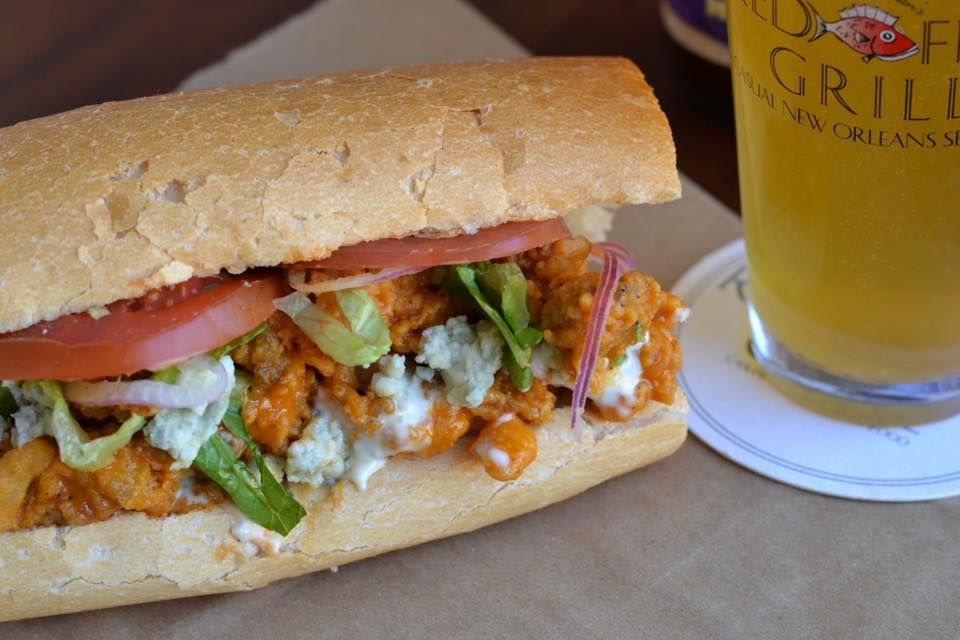
Signature BBQ oyster po-boy from Red Fish Grill via Facebook
History of the Po-Boy
As with most elements of New Orleans history, the origin of the po-boy has competing versions flavored over the years by creative storytellers and self-appointed authorities of dubious veracity. But the most widely accepted story holds that the sandwich was invented by Clovis and Benjamin Martin, brothers and former streetcar drivers who opened a restaurant on St. Claude Avenue in the 1920s.
When streetcar drivers went on strike in 1929, the brothers took up their cause and created an inexpensive sandwich of gravy and spare bits of roast beef on French bread they would serve the unemployed workers out of the rear of their restaurant.
When a worker came to get one, the cry would go up in the kitchen that “here comes another poor boy!,” and the name was transferred to the sandwich, eventually becoming “po-boy” in common usage.
Types of Po-Boys
Hot roast beef po-boys dripping with gravy are the close relatives of these originals, but po-boys now come in any variety sandwich makers can dream up. Fried seafood is the most popular version, drawing on the abundant local resources of the Gulf and bayous, but hot or smoked sausage, ham and cheese, and hamburger are also common.
The most unusual is probably the French fry po-boy, which simply pairs French fries, gravy and condiments with the French bread loaf. These are always the most inexpensive sandwich at restaurants that serve them. With all po-boys, remember that “dressed” means a topping of shredded lettuce, tomatoes, mayonnaise, and pickles.
Where to Get a Po-Boy
The variety of po-boys is matched only by the wide variety of places to get one in New Orleans. In the French Quarter alone, options range from simple deli counters to dining rooms operated by some of the biggest names in the local culinary scene.
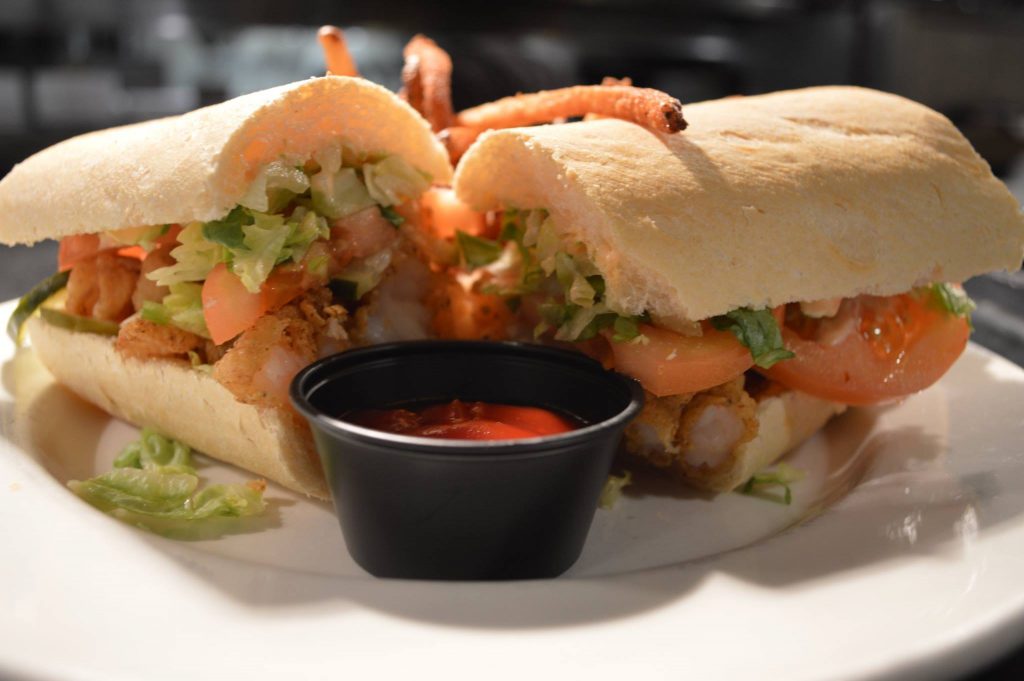
Fried shrimp po-boy from Dickie Brennan’s Bourbon House via Facebook
Chief among the latter category are the Brennans. At Red Fish Grill (115 Bourbon St.), the upscale seafood restaurant serves distinctive BBQ oyster po-boys on its weekend brunch menu. The seafood on these is not barbecued at all, but rather fried and tossed with a spicy, buttery sauce known only in New Orleans as BBQ style.
Directly across Bourbon Street, Ralph’s cousin Dickie Brennan serves shrimp, catfish, and BBQ shrimp po-boys at his Bourbon House (144 Bourbon St.) restaurant.
A less refined and more traditional atmosphere for po-boys is found at Johnny’s Po-Boys (511 St. Louis St.), a busy, crammed lunch counter that has been slinging po-boys since 1950. The po-boys here are quite large, and so is the menu.
Even when Johnny’s first reopened after Katrina, it had the largest selection of po-boys then available, from the traditional seafood versions to the meat overload of the Judge Bossetta Special with two types of sausage and ground beef.
Johnny’s has seating available, but when the weather is nice it’s a better idea to get a po-boy to go and eat it in Jackson Square or on a bench facing the nearby Mississippi River.
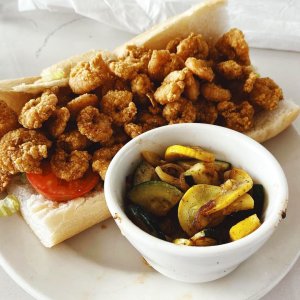
Shrimp po-boy at Felix’s Restaurant & Oyster Bar via Facebook
Perfectly perched on Iberville Street, Felix’s Restaurant & Oyster Bar (739 Iberville St.) serves up a generous selection of po-boys including shrimp, oyster, roast beef, soft-shell crab, crawfish, and hot sausage sandwiches. Add a side of french fries, sweet fries, sauteed veggies, and coleslaw to create a meal guaranteed to satiate your appetite.
There’s also good variety at Mena’s Palace (200 Chartres St.), a diner that serves sandwiches and plate lunches in a true down-home atmosphere. Po-boys are also served in the attractive dining room at the immensely popular Gumbo Shop (630 St. Peter St.), including a lighter-tasting sauteed shrimp po-boy.
You can get a po-boy with a slice of music history from the deli at Matassa’s Market (1001 Dauphine St.). The tight-packed corner market was started by Cosimo Matassa, the legendary New Orleans record producer who worked with the biggest names in R&B — from Fats Domino and Little Richard to Ray Charles and Aaron Neville — beginning in the late 1940s at his family’s nearby studio.
Next, there’s Stanley (1031 Decatur St.), a casual breakfast and lunch place that had the honor of being the first new restaurant to open in New Orleans following Katrina. At Stanley, get the excellent fried shrimp and oyster po-boy (half and half). Diners can even start the day with a breakfast po-boy here, stuffed with poached eggs, smoked bacon and hollandaise.
In the mood for something a little off the beaten path? At Killer Poboys (219 Dauphine St.), you can tantalize your tastebuds with a glazed pork belly po-boy that features lime cabbage slaw and garlic aioli. Or, there’s the Thai BBQ tofu po-boy, with spiced peanuts and coconut. Killer Poboys also has a location in Erin Rose Bar (811 Conti Street).
Are you planning to spend some time in New Orleans soon? To stay close to all the action, book a historic boutique hotel in the French Quarter at FrenchQuarter.com/hotels today!
Related Articles
JOIN THE NEWSLETTER!
Famous New Orleans Ghosts
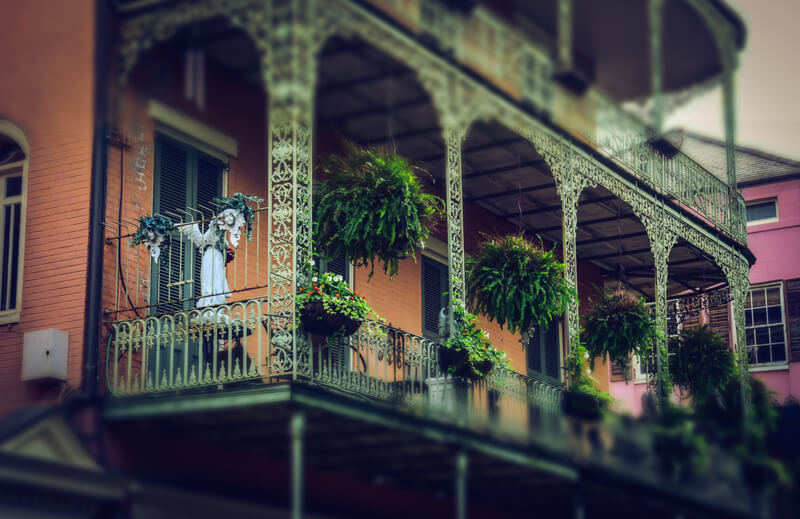
Whether some tour guides intentionally embellish the facts, or legends simply grow grander with time, the fact remains that many ghost stories are just that — stories. But if you believe in ghosts, and if you take into consideration New Orleans’ small footprint and long, sometimes dark history, it seems inevitable that many of its buildings and businesses would have a spirit or two hanging around.
Whether or not you believe in an afterlife, many local businesses come with service and a story. As fantastic as these tales may seem, they are rooted in fact. (Besides, is it really so hard to believe that prominent New Orleanians would want to keep partying even after their deaths?)
Arnaud’s
Arnaud Cazenave, who opened Arnaud’s in 1918, seems not to want to leave his own party — and who could blame him? A paranormal research society investigated the restaurant, where the ghost of Cazenave’s daughter, clad in a Mardi Gras gown, makes frequent appearances. Though the apparitions may be startling, there’s nothing to fear as these ghosts seem very friendly.
Bourbon Pub Parade
The Bourbon Pub is a two-story LGBTQIA+ dance club and a great place to party — for both the living and the dead. “Mam,” the club’s resident ghost, is a small-statured Creole woman. Dressed in a cotton dress and head wrap, she’ll often approach a patron and look them in the eye while muttering to herself before fading into obscurity.
In addition to Mam, regulars and staffers report unusual activity including unexplained footsteps, cups that move on their own, and odd sensations, including the feeling of being struck on the foot. Nobody knows Mam’s real identity, and no one knows exactly what the foot slaps are about, but the mystery is part of any good ghost story’s appeal.
Cafe Sbisa
Opened in 1899, this restaurant’s mahogany bar, George Dureau mural and dim lighting give it the heavy, moody ambiance that suggests an otherworldly presence — even to those who don’t know the building’s history.
Formerly in use as a ship’s chandlery (a place that sold supplies for ships), its second floor housed a brothel. One young girl was sold into prostitution to pay her father’s debts. She became pregnant, gave birth to a daughter, and hoped to leave once his debt was paid.
However, upon learning that she’d incurred further debts via room and board, she became despondent and drowned her daughter in the fountain before hanging herself. Some say she and her daughter’s ghost haunt the property to this day.
Muriel’s Jackson Square
Lots of people save for years to travel to New Orleans and eat at Muriel’s — but one lucky (or unlucky) being gets a reserved seat every night. A compulsive gambler, Pierre Antoine Lepardi Jourdan purchased the building that would become Muriel’s after the Great New Orleans Fire of 1788 and renovated it to become his “dream home,” according to Muriel’s website.
However, in 1814 he lost the building in a poker game. Devastated, he killed himself on the house’s second floor. He continues to make his spectral presence known to employees, moving furniture and smashing the occasional glass.
In tribute to its ghostly former owner, Muriel’s maintains not only his special table set with bread and wine but also a designated séance room where Jourdan can hang out.
Muriel’s is directly next door to the Place d’Armes, a historic French Quarter hotel with its own ghoulish story. Check it out below.
Myrtle’s Plantation
The Myrtle’s Plantation sits on a Tunica Indian burial ground in Saint Francisville, about 85 miles outside New Orleans, but it’s well worth the drive. Not only does the circa-1796 plantation house a number of artifacts, including hand-painted stained glass and gold-leafed French antiques, but it’s also home to a number of ghosts.
Tour guides say 10 murders took place in the house: among them deaths by gunshot and poisoning. Perhaps the most famous ghost is Chloe, a governess who killed her young charges with poisoned cake after their father ended his affair with her. Chloe was hanged, but people bold enough to sleep overnight at the haunted bed-and-breakfast report seeing the turbaned woman peeking into the bedrooms.
Pharmacy Museum
The Pharmacy Museum’s medical artifacts — leech jars, hypodermic needles, bloodletting tools — are cringe-worthy on their own. But those who know the museum’s violent backstory will find the antique collection of medical equipment even more unsettling.
After Louis Dulfiho Junior, the first licensed pharmacist in the U.S., sold his business to a former employee, Dr. Joseph Dupas, things began to go awry. Suffering from a disease that slowly drove him insane before it killed him in 1867, Dupas began losing many of his patients. He claimed they had returned to France, but after his death, bodies were discovered on the property. Were these his victims? Possibly.
The Bombay Club
With its wood paneling, live jazz and ice-cold martinis, The Bombay Club couldn’t be more refined — but according to Fear Dat New Orleans: A Guide to the Voodoo, Vampires, Graveyards and Ghosts in the Crescent City by Michael Murphy, and Paranormal New Orleans, it’s haunted by the ghost of a Storyville madame. The Bombay Club patrons and employees report seeing her curvy figure in the club, where she fits in just fine among the sultry chanteuses and local minxes. What can we say — she’s enjoying the high (after)life.
The Mortuary Haunted House
During most of the year, this 1872 grand Victorian mansion hosts events, parties and weddings for local and celebrity clients. But in October, it switches gears to get in touch with its spooky past, operating as a haunted house attraction complete with live snakes and rates and underground crypts.
Surrounded by cemeteries, the former mortuary is one of the most haunted places in the country, according to multiple paranormal investigative units. Their advanced instruments have measured electromagnetic activity, temperature changes, electronic voice phenomena, and other phenomena that indicate the presence of spirits — and guests to the house have seen far more gruesome apparitions, including the ghost of a mortician doing his bloody work.
If you’re planning a stay in New Orleans, be sure to check out our resource for French Quarter Hotels.
Related Articles
JOIN THE NEWSLETTER!
French Quarter Hotels With Pools
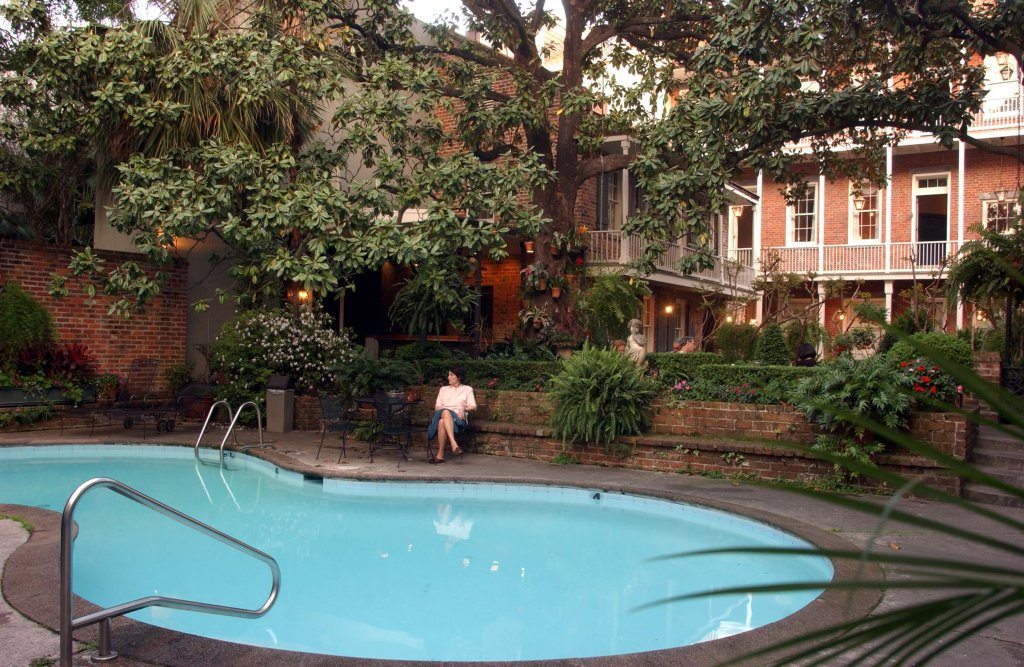
When the weather is just right, why not take a dip? Whether you’re visiting New Orleans or staycationing, you can cool off and enjoy the city (or take a break) at any of the three charming, one-of-a-kind outdoor pools located inside these boutique hotels in the French Quarter: French Market Inn, Place d’Armes Hotel, and Hotel St. Marie.
Their pools offer something some other spots in the city don’t — a quiet place to escape, recharge, and soak up the sun away from the crowds. They’re intimate and secluded, and can offer some serenity just steps away from the hustle and bustle of one of the oldest neighborhoods in the U.S.
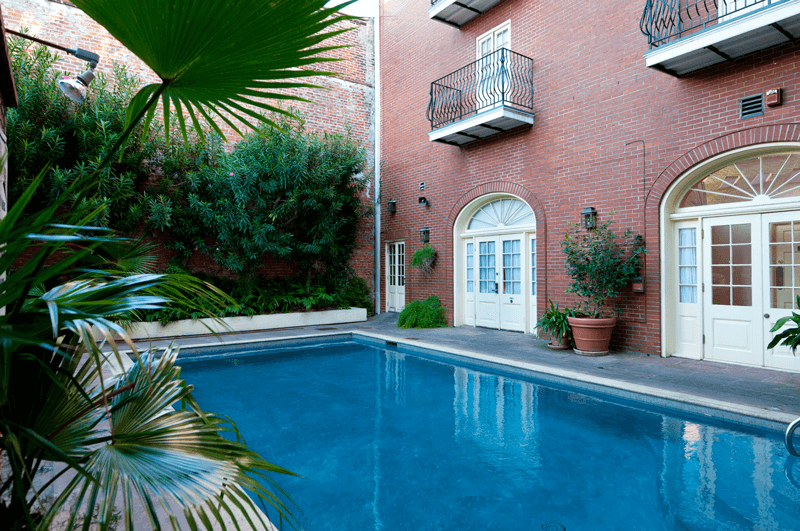
All three pools are saltwater and tucked away in private tropical courtyards, surrounded by beautiful brick walls, fountains, and lush greenery. What makes the pool at Hotel St. Marie (827 Toulouse St.) stand apart from the many other hotel pools in the city is that it’s handicap-accessible and especially kid-friendly, at 4.5 feet at its deepest.
Built for lounging, the pool area and the landscaped courtyard with patio seating can surely put you in vacation mode. You can grab a cocktail or a bite to eat from Vacherie Restaurant & Bar located inside the hotel, and enjoy either poolside.
Vacherie is three in one: the cafe is a convenient, on-the-go option for a snack or a quick sandwich; the full bar offers artfully crafted drinks (and the daily happy hour 3-6 p.m.); and the restaurant is great for elegant yet low-key dining-in.
Inside, Hotel St. Marie serves up a classic French Quarter atmosphere with modern amenities. Its European-style decor delivers luxurious touches like chandeliers and period paintings. The meticulously restored exterior is lined with wrought-iron balconies overlooking the action, only half a block away from Bourbon Street and a mere four blocks from Jackson Square and the St. Louis Cathedral.
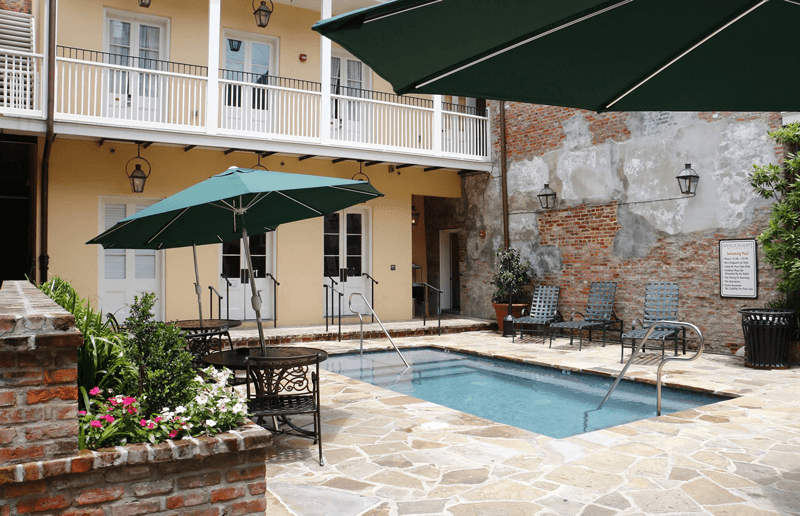
The recently upgraded pool at the French Market Inn (509 Decatur St.) features a sun deck, lounge chairs, and plenty of seating around the pool and everywhere around the lovely courtyard. If you want to sip your favorite hot, iced, or frozen coffee beverage poolside, the on-site PJ’s Coffee has something fresh brewing daily, from 6 a.m. to 9 p.m.
The historic French Market Inn is uniquely situated to offer both the serenity of its private stone-paved courtyard and a glimpse into a busy French Quarter neighborhood steps away from the Mississippi River (and its balconies, overlooking Decatur Street, offer great views of both).
When you step inside, you’ll find yourself surrounded by the quiet elegance of antique brick and the meandering garden. Yet, the hotel is located within six blocks of renowned New Orleans attractions like Jackson Square, the French Market, the Audubon Aquarium and Insectarium, Bourbon Street, and Harrah’s New Orleans Casino.
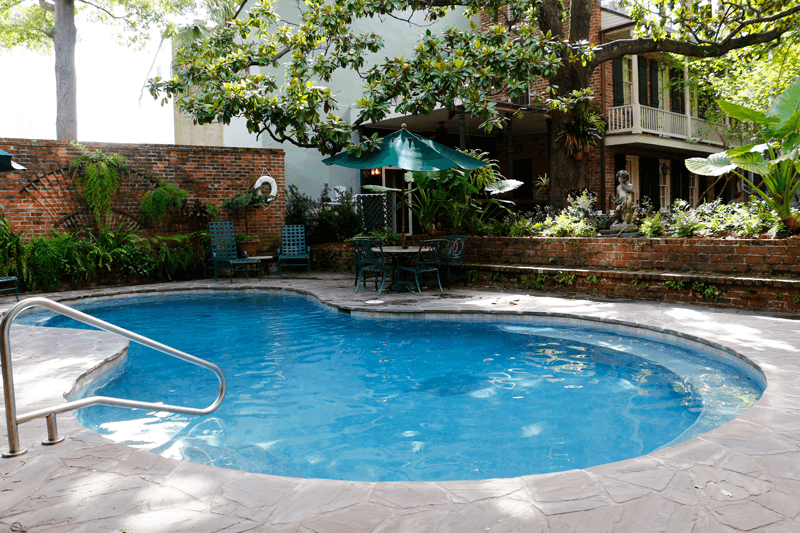
The pool at the historic Place d’Armes Hotel (625 St Ann St.) has built-in seating inside it. The courtyard surrounding it is particularly enchanting, showcasing the award-winning patio planning and a variety of planted and potted plants, in all their tropical glory, that are native to Louisiana.
Find a spot at one of the patio tables or the benches in the shade of the magnolia trees, and relax to the sound of the gurgling fountains. You can also take your complimentary continental breakfast there. Just steps away from Jackson Square and located in two historic townhouses, Place d’Armes Hotel embodies old-world charm inside and out.
A few more things to know about these three pools:
- When you’re a guest at any of Valentino Hotels you can access the pool at any of those other hotels.
- They are not open to the public, only guests.
- Food and drink are welcome in the pool area, but no glassware.
- They’re open from 10 a.m. to 10 p.m. daily.
Cool off, indulge, and take advantage of the photo ops!
Related Articles
JOIN THE NEWSLETTER!
Pop in for a Drink at the Best Creole Restaurants
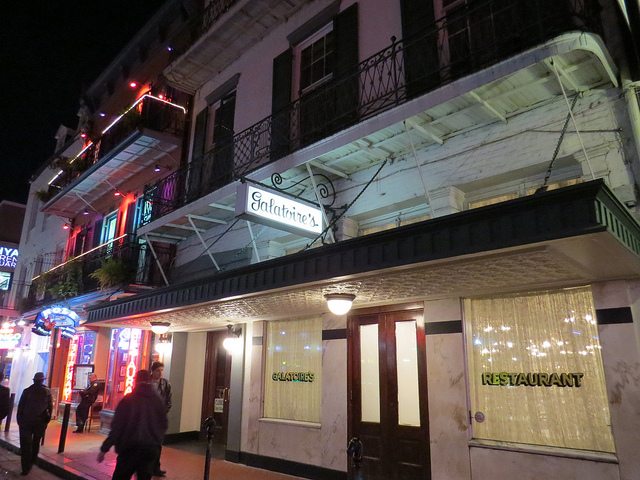
Galatoire’s Restaurant by rulenumberone2
By: Ian McNulty
No one should leave New Orleans without experiencing its distinctive Creole restaurants, but whittling down the city’s long list of outstanding establishments to fit your budget and time constraints can be a real challenge. After all, there are only so many meals one can cram into a vacation.
Happily, there is an easy and tempting way to get the feel and flavor of several different classic New Orleans establishments each day without making reservations or taking out a loan. Simply saddle up to the bar.
Many of Crescent City’s most celebrated dining establishments feature lavish bars or lounges where guests can soak up the old New Orleans atmosphere, enjoy a cocktail or glass of wine, or even peruse the menu for a light bite without committing to a full meal. Just plan out a schedule and splurge a little.
Lunch — the quintessential meal at Galatoire’s Restaurant (209 Bourbon Street) — can last literally all day. But guests can still manage a quick visit here thanks to a 1999 renovation that added a bar and lounge area to the second floor.
For the better part of a century, drinks were served only from a service bar to diners already seated, but the upstairs bar offers a different way to experience Galatoire’s, if only for a cocktail. While the jacket-required dress code is not as strictly enforced at the bar, it’s a good idea to dress the part anyway if you plan to imbibe in this fine environment.
The storied history of Arnaud’s Restaurant (813 Bienville Street) holds that its labyrinthine network of private dining rooms, corridors and secluded chambers effectively concealed illicit drinking during the dark days of Prohibition.
In fact, requesting coffee at the start of lunch was in many cases a password for ordering a cocktail. Such measures aren’t necessary today, of course, but the rambling old building retains much of the same mystique.
The restaurant’s French 75 Bar — named for a specialty drink of brandy and champagne — serves both as a lounge for diners before and after a meal and also as a destination in its own right to bask in Arnaud’s ambiance.
Tujague’s Restaurant (823 Decatur Street) didn’t start its long career as an upscale restaurant, but rather as a place for workers from the nearby docks and merchants from the even closer French Market to catch a workday meal. Flash forward more than 150 years, and the unique Creole repasts served up in the dining room have established Tujague’s as a New Orleans dining destination.
But it’s in the establishment’s front barroom that its original rakish spirit truly lives on. There are no stools along the long, beautiful cypress bar and in fact, the only real eye-catching décor in the place is an ancient and massive mirror behind the bar said to have been imported from Paris in the 19th century.
Ducking in from bustling Decatur Street’s sidewalks, a drink in the high-ceiling room can seem like a time warp.
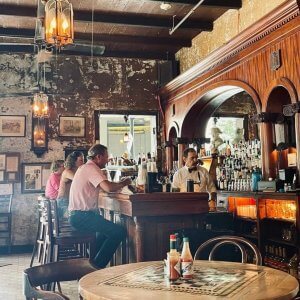
The front dining room and bar at the Napoleon House, courtesy of Napoleon House on Facebook
Napoleon House (500 Chartres Street) is named after the French emperor and offered to him as a refuge after he was driven from power. Napoleon never took up the offer, but today plenty of locals and visitors avail themselves of the bar and café housed in the 18th-century building.
The bistro in the rear is an upscale establishment with a Creole menu to match, but it’s the casual front dining room and bar that are the most atmospheric. Plaster walls show a patina of age and the subdued, old world décor is accented by the omnipresent classical music broadcast through the room.
The specialty drink here is the Pimm’s Cup, which is the color of iced tea and nearly as refreshing, though fortified with alcohol and garnished with a slice of cucumber. If it gets too crowded and the weather is fine, try to score a table in the small, lush courtyard at the center of the old building.
Are you planning to spend some time in New Orleans soon? To stay close to all the action, book a historic boutique hotel in the French Quarter at FrenchQuarter.com/hotels today!
Related Articles
JOIN THE NEWSLETTER!
Things to Do in New Orleans: Outdoor Attractions and Activities
In New Orleans, every season has something for outdoor lovers. Winter brings cooler weather and a unique light for nature photographers; spring and fall are temperate and gorgeous; and summer comes with fewer crowds and unique wildlife spotting opportunities.

New Orleans City Park
City Park
The largest park in New Orleans is one of the most popular urban green spaces in the country and is about half as large as Central Park in New York to boot. There are several areas of the park, which is run by the City Park Improvement Association, part of the state government of Louisiana, as opposed to the city of New Orleans.
If you tackle the 1,300 acres comprising City Park, it’s best to approach the place as a series of destinations, rather than one entity you can experience in a single-day trip. The front area of the park, which is most readily accessed by visitors, includes the New Orleans Museum of Art, the adjacent Sydney and Wanda Besthoff Sculpture Garden, and the Big Lake, surrounded by a walking path that is immensely popular with families and joggers. As you scoot around the Big Lake, keep an eye (and an ear) open for the Singing Oak, a live oak tree festooned with wind chimes and bells.
Past the Museum of Art is a family-friendly area that hugs Bayou Metairie, and includes Cafe Du Monde (beignets! Cafe au lait!), the Greek-inspired Peristyle pavilion, and a large playground. Walking along City Park Avenue from this point leads you past some of the park’s ancient live oaks — City Park contains the largest grove of live oaks in the world.
The Goldring/Woldenberg Great Lawn sits across the park’s pretty Botanical Gardens and the twin kid-friendly amusements of Storyland and Carousel Gardens. For those seeking a more hike-y outdoors experience, we recommend driving to the traffic circle that sits at the intersection of Diagonal Drive and Harrison Avenue; you’ll find pull-offs for parking along Harrison.
From here you can either walk south/towards the river to Scout Island and the trails that web around it, or north/towards the lake into the Couturie Forest. In either of these areas, you can genuinely get the sense that you’ve left the city — we’ve even spied gators around Scout Island.
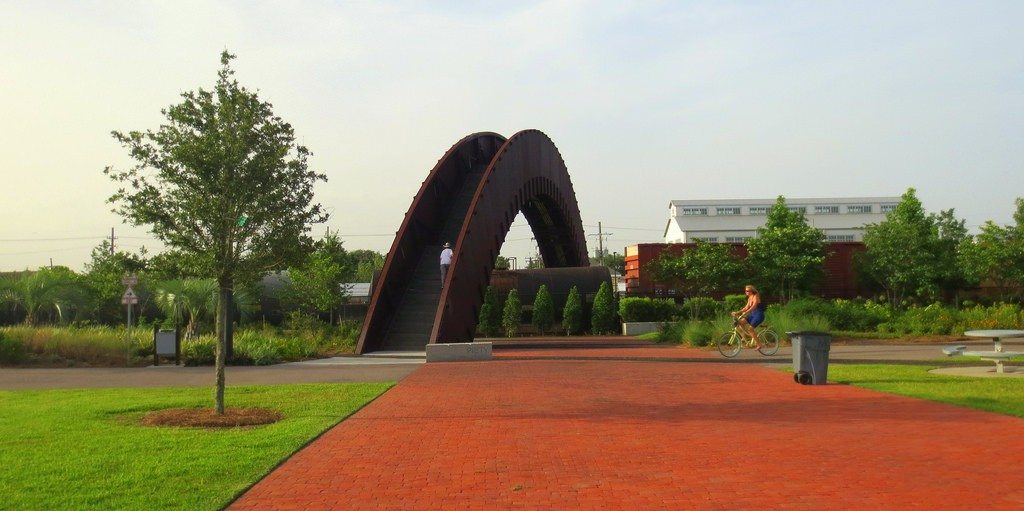
Crescent Park, Bywater, by Bridget Coila
Crescent Park
If you’re staying in the French Quarter, one of the easiest ways of getting outdoors is heading to the Crescent Park, which connects Faubourg Marigny — located at the edge of the Quarter — to the Bywater neighborhood, all via a long, waterfront park that hugs the contours of the Mississippi River. The Crescent Park consists of several sections., all separated from the city proper by either levee walls or a buffer zone of old railway infrastructure and shrubbery.
The section closest to the Quarter is a long, covered space pavilion, a former wharf linked to the intersection of N. Peters Street and Marigny Street via a long, covered bridge. It should be noted that this is the only handicap-accessible entrance to the park.
Making your way downriver, you’ll proceed along a paved path used by cyclists, joggers and walkers, passing the Piety Street Wharf, which has been converted into an austere collection of geometric shapes, hard lines and metal accents. This section of the park is connected to Piety and Chartres streets by the Piety Street Bridge, a footbridge many locals have dubbed the “rusty rainbow.”
The foot and cycling path continues downriver to the block between Bartholomew and Mazant streets in the Bywater, passing a popular dog park and several acres of landscaped lawn space and waterfront pedestrian areas. You can exit the park here via a small ramp, or walk back to the Quarter.
All in all, Crescent Park is a brilliant means of accessing the Mississippi Riverfront, and while the park is clearly within the city, its separation via walkways and bridges makes users feel outside of the urban experience at the same time.
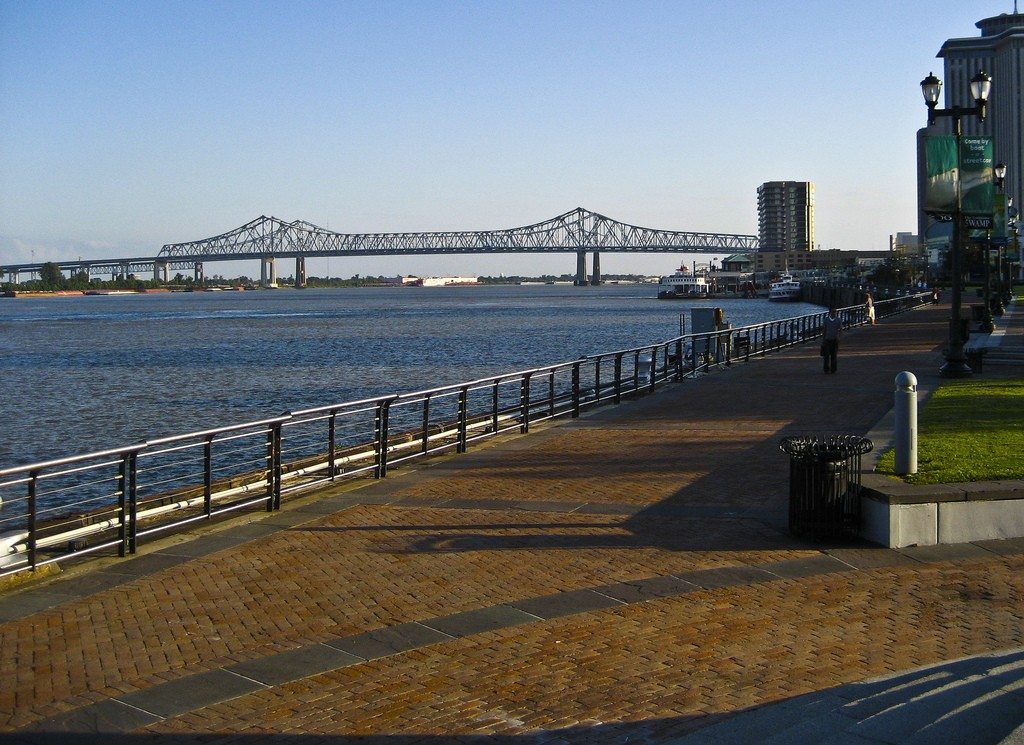
Greater New Orleans Bridge from Woldenberg Park by Mary Witzig
Woldenberg Park
Woldenberg Park is essentially the French Quarter continuation of Crescent Park, although to be really fair, that description should be reversed — Woldenberg was around first. Woldenberg is the easiest means of accessing views of the Mississippi River for those who are staying in the French Quarter.
The park is a grassy space that runs the French Quarter length of the river to the Central Business District and is a quiet means of running between, say, Cafe Du Monde and the Audubon Aquarium. We find Woldenberg enjoyable for the simple pleasures of, say, watching some public busking or just admiring large ships as they tug by on North America’s largest river.
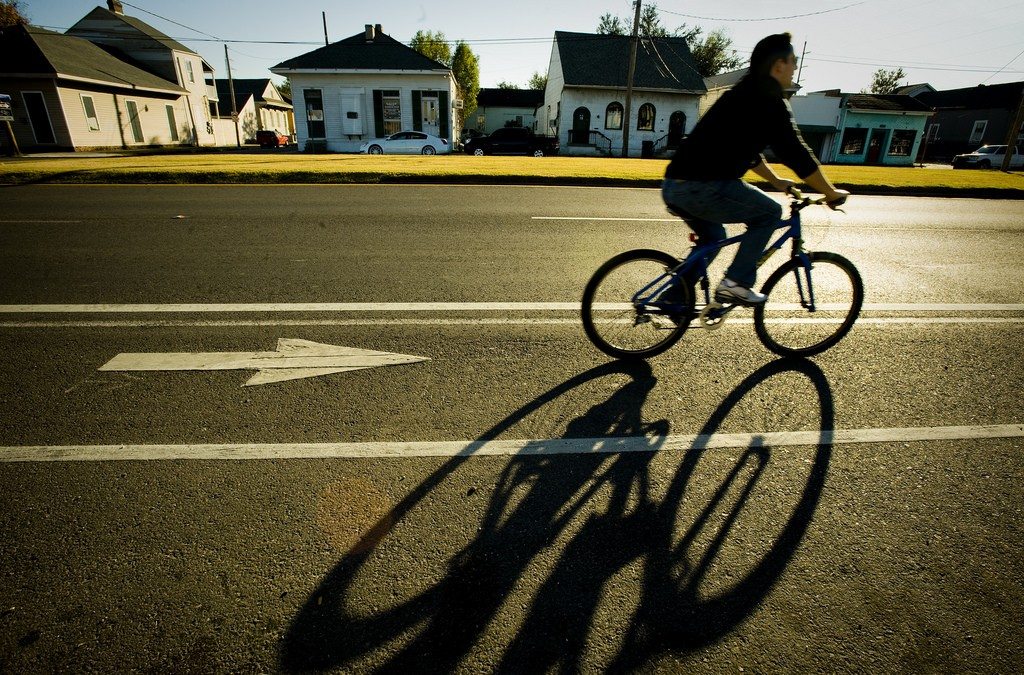
Bywater Bike Lane by Tulane Public Relations
Bike Lanes
New Orleans is an excellent city for bicycling — it’s flat, the architecture is gorgeous, and there’s an increasing amount of good bike infrastructure growing around town. From the French Quarter, you can cycle up Esplanade Avenue all the way to City Park, or cycle to the Lafitte Greenway, which connects the edge of the Quarter to a pretty slice of Mid-City that just happens to be adjacent to Second Line Brewing (and not too far from City Park to boot).
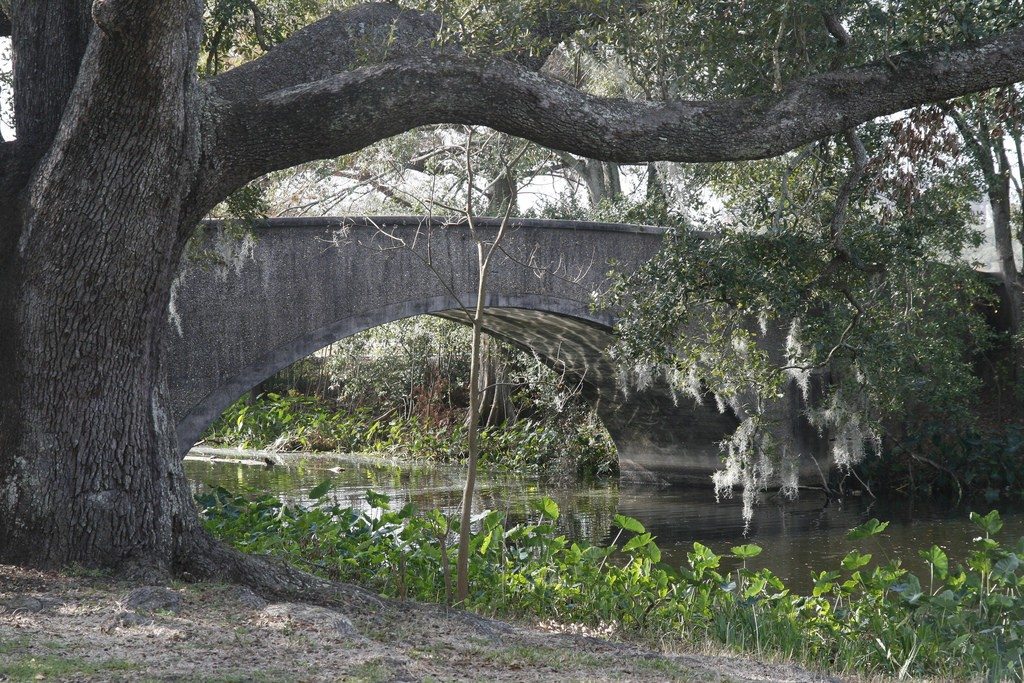
Arch Bridge in Audubon Park by Samantha Chapnick
Audubon Park
The biggest slice of Uptown green space is Audubon Park, an almost too-charming assemblage of live oaks, Spanish moss, pedestrian paths, jogging lanes, and general fecund beauty — all framed by some of the grandest, most beautiful homes in the city. Although much of the park is taken up by golf courses, there’s still plenty of ground to cover if you want some fresh air or a place to let the family run off some energy.
We’re particular fans of The Fly, the waterfront portion of Audubon that offers wonderful views out to the West Bank of the Mississippi. Other points of interest include a lagoon, lawns that front Tulane and Loyola Universities, and the Audubon Zoo.
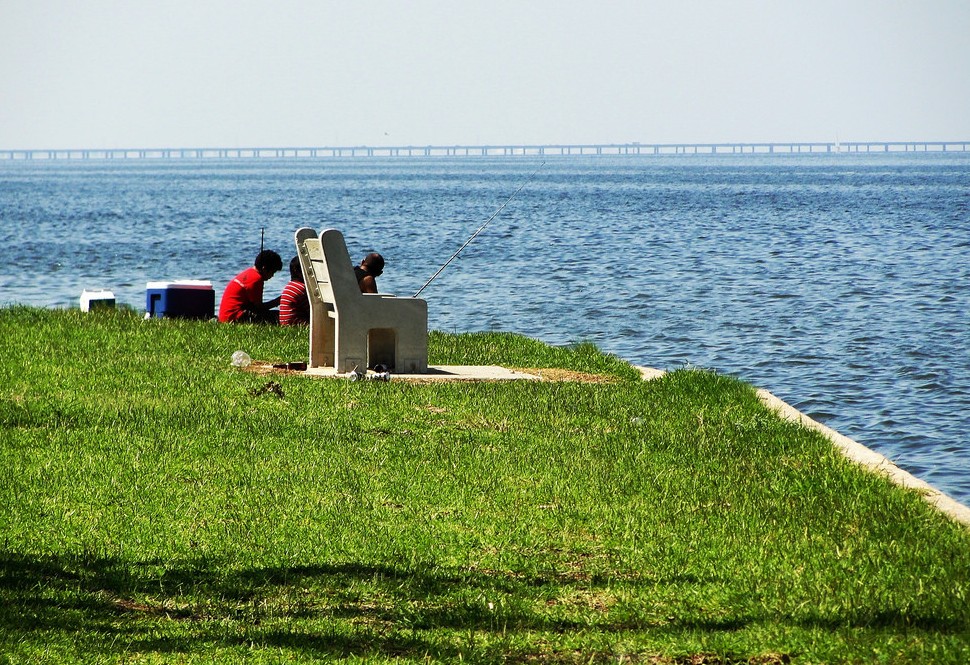
A orillas del Pontchartrain by Javier Ignacio Acuña Ditzel
The Lakefront
Lake Pontchartrain is the “other” body of water in New Orleans, and the lakefront includes several miles of picnic areas and levees that are popular with local families. To get out here, good access points include the areas around Lakeshore Drive and Canal Boulevard, and Lakeshore Drive and Lake Terrace Drive.
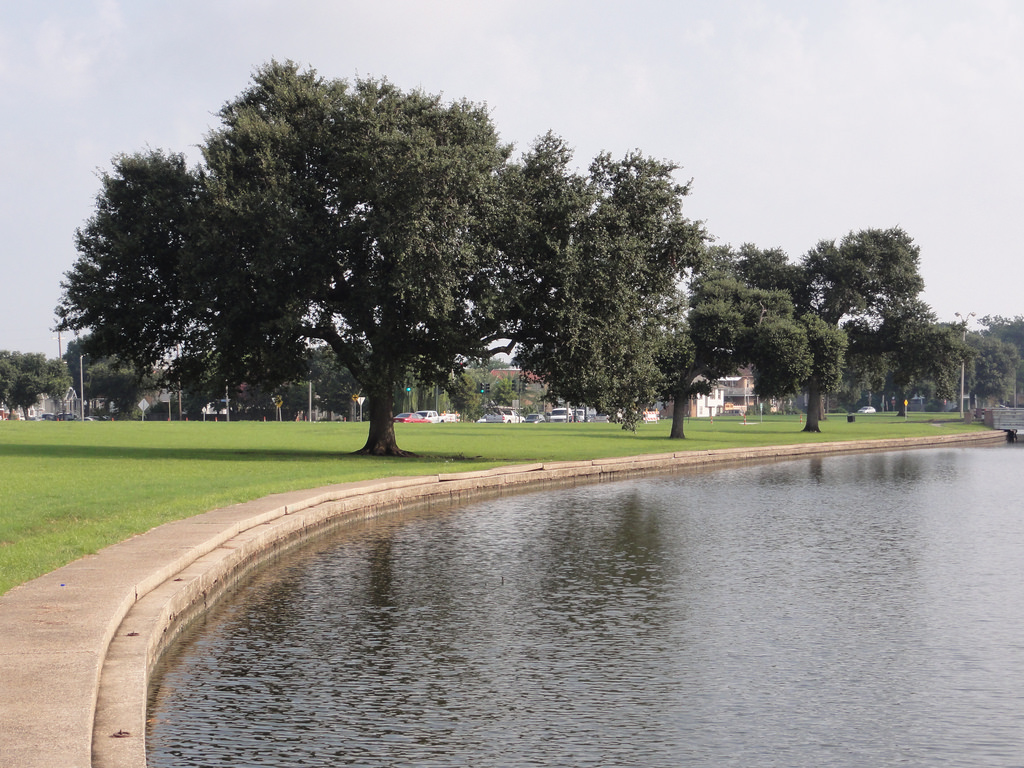
Trees on the Bayou by Bart Everson
Bayou St. John
Many visitors to New Orleans assume Bayou St. John is a wild and wooly swamp slapped into the heart of the city. This isn’t really the case — rather, St. John is a pleasant inland waterway that connects Mid-City all the way to Lake Pontchartrain. The portion of the Bayou that runs between Orleans and Esplanade Avenues is a particularly pleasant slice of the urban landscape, cut through by the still waterway, shaded by trees, and peppered with waterfowl and relaxing families.
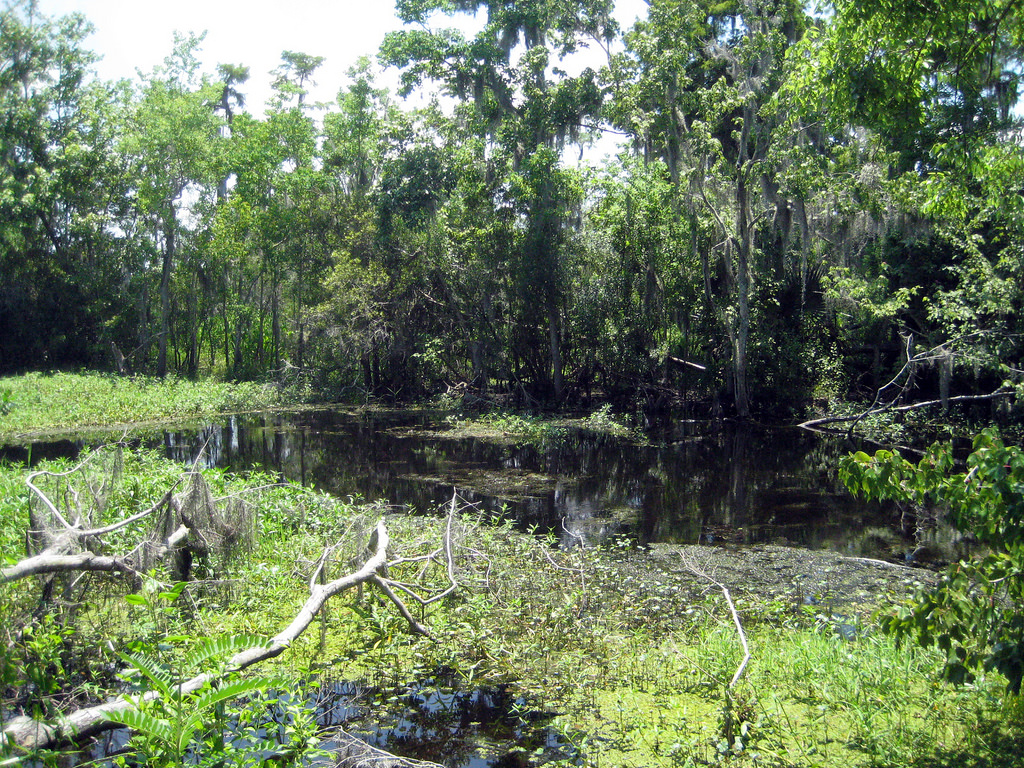
Barataria Preserve by Neil O
Barataria Preserve
Located about 40 minutes south of the city, the Barataria Preserve, managed by the National Park System, is an easily accessible slice of wild Louisiana. Trails and boardwalk paths here lead past deep swamps, flooded forests and long, vegetation-choked waterways. It’s not uncommon to spot alligators out this way, depending on the time of year. If you want to see the Louisiana swamp without getting into a boat, this is your best bet in the vicinity of New Orleans.

Manchac Swamp, courtesy of Louisiana Lost Lands Environmental Tours on Facebook
Paddling
The waterways of South Louisiana are a special, unique ecosystem that is best appreciated during a slow, involved paddling trip. Excellent kayak outfitters in the area include Lost Land Tours, which leads paddling trips into the South Louisiana wetlands led by naturalists and environmental experts who know and love the watery native soil with a passion. An excellent means of accessing the almost alien beauty of the local bayou wilderness, itself a unique American land and waterscape.
If you’re planning a visit to New Orleans, be sure to check out our resource for French Quarter Hotels.
Related Articles
JOIN THE NEWSLETTER!
Meet the Mississippi: Exploring the New Orleans Riverfront
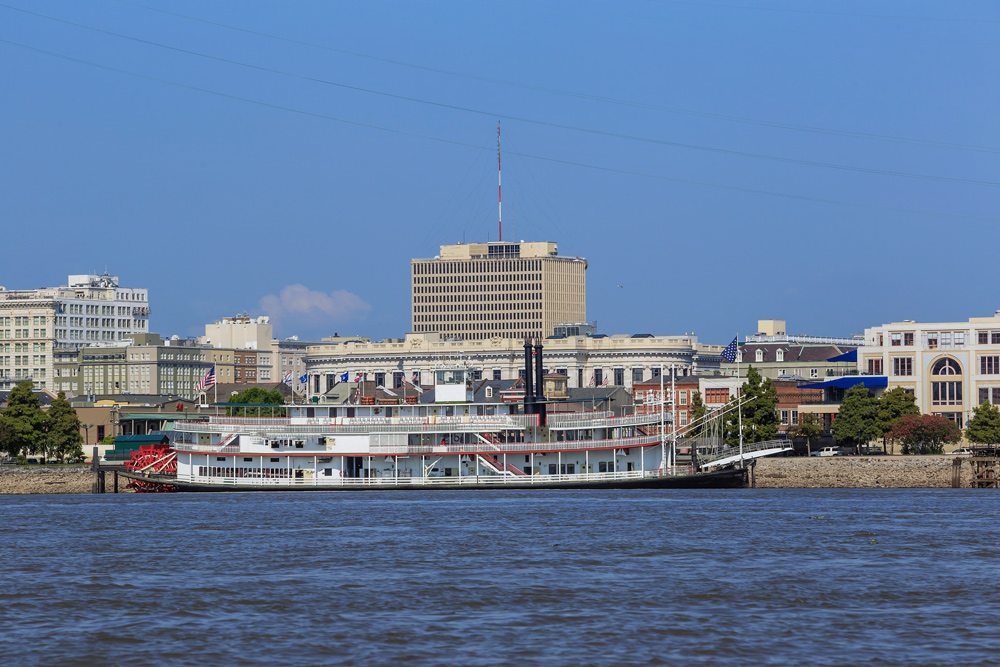
The Mississippi River looms large in the American identity, from the history and literature taught in schools to the nation’s modern economy.
In New Orleans, you can easily experience the river in all its bustling activity, natural splendor and historical significance via the Riverfront area adjacent to the French Quarter. Sweeping vistas, public art, family activities and jumping-off points for riverboat tours are all clustered here along a linear park and walkways.
The Mississippi has always been a working river and for generations, most New Orleanians were cut off from any access to it by floodwalls, warehouses and very busy wharves. That began to change in the 1970s through the 1980s, as underused industrial buildings near the French Quarter were razed and replaced by Woldenberg Park, a grassy open space named for local philanthropist Malcolm Woldenberg, and the Moonwalk, a walkway named for the former New Orleans mayor Maurice “Moon” Landrieu.
A great place for a picnic of po-boys or local seafood, a jog or just to catch a cooling breeze on a typically humid New Orleans day, this mile-long stretch of the Riverfront is also the setting for many community celebrations and special events. For example, the largest stages for the annual French Quarter Festival are set up here each spring and the park is prime real estate for viewing fireworks during the city’s Fourth of July activities, known collectively as Go 4th on the River.
A bronze statue of Malcolm Woldenberg in the park that bears his name is one exhibit in what has grown into an informal sculpture garden along the Riverfront. Near the philanthropist’s statue is a stainless steel sculpture called “Ocean Song.” Created by local artist John Scott, the piece depicts the motion of water in eight narrow pyramids, polished to a reflective gleam.
Further downriver is the elegant “Monument to the Immigrant,” crafted from white Carrara marble by sculptor Franco Allesandrini. The work faces the Riverfront with a ship’s prow topped by a female figure reminiscent of Lady Liberty, while behind her stands a turn-of-the-century immigrant family looking toward the French Quarter.
A few blocks downriver is Robert Schoen’s “Old Man River,” a stone human figure also made from Carrara marble. Weighing in at 17 tons and standing 18 feet high, the statue speaks to the river’s power and majesty in its rounded, circular body forms.
The most recent addition to this collection of public art is the city’s Holocaust Memorial, which was dedicated in 2003. Created by Israeli artist and sculptor Jacob Agam, the memorial is often described as a “living work” because its images and shapes change as a visitor walks around it.
Vestiges of the area’s industrial past remain, like the warehouses and wharves that begin behind the French Market and the freight trains that still rumble along a corridor between the river and the French Quarter. Much gentler rail traffic comes in the form of the city’s red Riverfront streetcars, built in 1988 with a vintage look and modern amenities to carry passengers from Canal Street to the lower end of the French Quarter.
Past the French Market, going along St. Peter Street, one can spy the latest pedestrian-friendly addition to the city’s Riverfront real estate: the entrance to the Crescent Park, an unmissable pedestrian footbridge linked to the ground by an elevator and staircase.
The Crescent Park plays with the city’s shipping heritage, drawing upon that legacy to create a severe, post-industrial aesthetic that includes open-air pavilions, concrete buttresses, long walking and cycling paths, and rusted metal features like a pedestrian bridge, all laid out in a linear park that runs from Faubourg Marigny through the Bywater. Using Crescent Park’s linear pathway, you can walk all the way from N. Peters Street and Marigny Street to Chartres Street and Bartholomew Street.
Anywhere you go on the river, you’re likely to spot modern shipping traffic. The ports, refineries and terminals clustered between the mouth of the river and Baton Rouge to the north make the Mississippi one of the world’s busiest rivers, and from a bench along the Riverfront visitors can watch as tugs, tankers, freighters, cruise ships, and long strings of barges navigate its currents.
Street musicians usually perform nearby for tips, adding to the ambiance with their saxophones or trumpets. From the French Quarter, visitors can see with their own eyes how New Orleans earned the nickname the Crescent City as large vessels follow the dramatic turn in the river upon which the French Quarter is situated.
If all these maritime vistas give you the urge to use your sea legs, the Steamboat Natchez will take you out on the muddy Mississippi and offers tours of varying lengths and themes. Designed to resemble the old steamships that once brought cotton, gamblers and jazz up and down the river, this modern vessel gives today’s visitors a way to experience the Mississippi up close and view the city’s skyline and intricate French Quarter roofscape from the river.
Back on dry land, the Riverfront area is also home to two of the city’s most popular family attractions, the Audubon Aquarium of the Americas, joined by the Insectarium in the Summer of 2023. The active area outside these facilities is filled with whimsical sculptures of marine life, well-shaded park benches and outdoor vendors serving light refreshments.
Just upriver from the aquarium area is the Spanish Plaza. Dedicated in 1976 during the U.S. bicentennial, the plaza was a gift from Spain in a gesture of friendship to its one-time colony. It features a large fountain ringed by tile mosaics of Spanish coats of arms representing that country’s provinces. Vendors in the plaza serve smoothies and snacks, while the Riverwalk Outlets is just next door for air-conditioned shopping.
Are you planning to spend some time in New Orleans soon? To stay close to all the action, book a historic boutique hotel in the French Quarter at FrenchQuarter.com/hotels today!
Related Articles
JOIN THE NEWSLETTER!
Find Your Favorite French Quarter Hotel
The over-three-centuries-old French Quarter is located right in the heart of New Orleans, a tapestry of music, cuisine and cultures, and a testament to its colorful past. With its non-stop, 24/7 action, breathtaking architecture, world-class restaurants, outstanding music scene, and only-in-New-Orleans experiences, the French Quarter is irresistible.
And what better way to explore this one-of-a-kind place and one of the oldest neighborhoods in the U.S. than to stay right in the middle of the action?
These four historic boutique hotels are located in the French Quarter, so you are never far from all that the neighborhood has to offer. And when you’re done exploring, enjoy the welcome respite from the bustle and relax by the pool (French Market Inn, Place d’Armes Hotel and Hotel St. Marie have saltwater pools), hit a happy hour, grab a bite in one of the hotels’ bars and restaurants, or simply enjoy the view from your room or your balcony.
So, what makes these hotels outstanding? Read on!
Hotel St. Marie
Hotel St. Marie (827 Toulouse Street) features modern amenities combined with a classic French Quarter atmosphere. Its European-style decor delivers luxurious touches like chandeliers and period paintings, yet the extensive renovation added many modern updates.
The meticulously restored exterior is lined with wrought-iron balconies overlooking the action, only half a block away from Bourbon Street and mere four blocks from Jackson Square and the St. Louis Cathedral.
Many of its elegant guest rooms feature balconies overlooking the exciting streets of the French Quarter or the serene tropical courtyard with a saltwater pool. There are eight room types at Hotel St. Marie, with either one king or two queen beds.
The deluxe room, for example, features elegant antique reproduction furnishings, and the streetside balcony room features a balcony overlooking the French Quarter (great for people-watching!). Both the suite and the junior suite offer an elegant sitting area.
The on-site Vacherie Restaurant & Bar is three in one: restaurant, bar and cafe, which are all located next to one another on the first floor. The elegant yet low-key restaurant serves authentic Cajun cuisine with a few inventive twists, focusing on homestyle Cajun and regional Louisiana fare like BBQ shrimp and grits or crabcakes.
The cafe serves up snacks and things like sandwiches, perfect on the go. You can also hit the full bar for the daily happy hour 3-6 p.m. The $8 bar menu includes things like sliders of the day and boudin balls. To drink, $6 will get you a cocktail like rum punch, a glass of any of the house wines, or a draft beer flight (three half-pints of your choice).
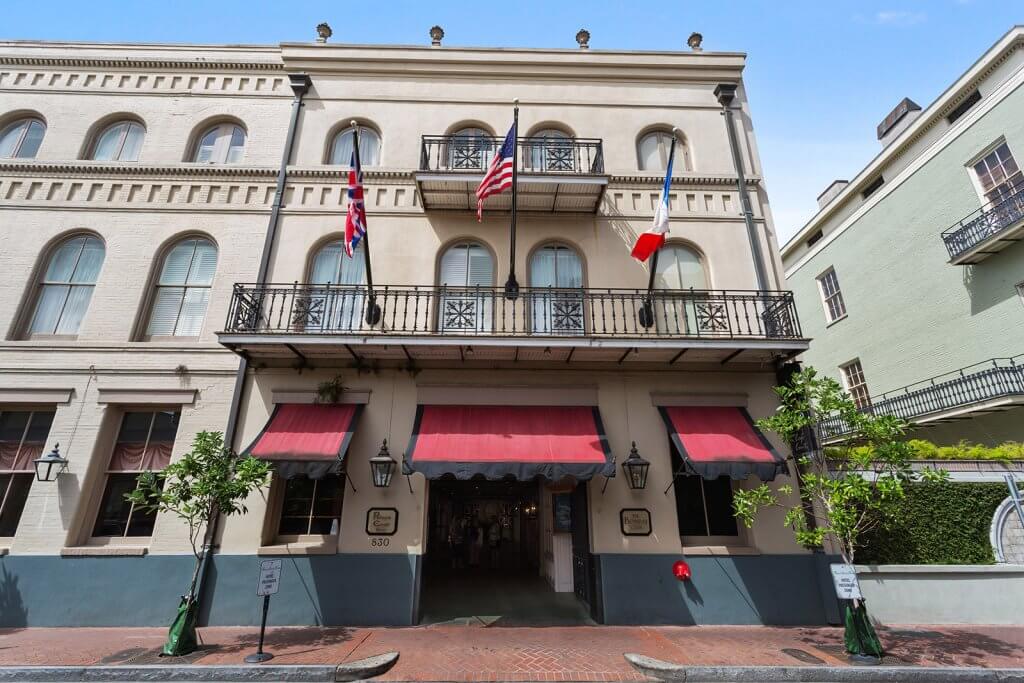
Prince Conti Hotel
Prince Conti Hotel (830 Conti Street) features an old-world southern atmosphere with modern amenities. The Prince Conti Hotel is also very close to a plethora of renowned historic sites and fun destinations. The always-hopping Bourbon Street is only a block away, and the historic St. Louis Cathedral and Jackson Square are six blocks away.
The shopping and dining destinations of Canal and Royal streets are close by, and the museums and world-class restaurants of the CBD are a short ride away. New Orleans is also known for its exciting nightlife, and the Prince Conti Hotel puts you close to some of the best nightlife destinations, like Harrah’s New Orleans Casino, Pat O’Brien’s, House of Blues, and more.
The hotel is housed in a historic 19th-century townhouse, which sports a carriageway and plenty of European charm. Some of its rooms feature exposed brick and recent renovations updated the amenities and the interior’s rich colors and moldings, adding touches of opulence and the classic New Orleans charm.
Despite its proximity to the 24/7 action right outside its windows, Prince Conti Hotel offers a quiet respite from it all, an oasis with an elegant yet relaxed vibe.
The hotel also houses The Bombay Club, an elegant New Orleans favorite featuring creative cocktails and bar bites. The Bombay Club serves up dozens of varieties of martini and nightly live music.
In the morning and afternoon hours, dine in style at the Cafe Conti, also located in the Prince Conti Hotel. Serving a variety of breakfast and lunch fare daily, Cafe Conti’s menu gives special attention to Creole and French cuisine.

French Market Inn
The French Market Inn (509 Decatur Street) is located on the bustling Decatur Street, just steps away from the Mississippi Riverfront and within six blocks of renowned New Orleans attractions like Jackson Square, the French Market, Audubon Aquarium of the Americas (joined by the Insectarium in the Summer of 2023), Bourbon Street, and Harrah’s New Orleans Casino.
This historic hotel boasts a serene, private stone-paved courtyard with a saltwater pool, a fountain, and a beautiful tropical garden. Its antique brick facade opens onto a lobby adorned with period paintings, chandeliers, and columns, with period details throughout the building. The hotel’s balconies, overlooking Decatur Street, offer great views of the river and the vibrant neighborhood.
Since this historic property dates back to the 18th century, every guest room has its own distinct character. The first property records date as far back as 1722, and it was used in the past as a bakery and a family residence. In the early 1830s, the Baroness Pontalba y Almonaster bought the bakery and the surrounding lots and turned it into an inn.
If you’re in the mood for a comforting beverage, PJ’s Coffee is on-site and has something fresh brewing daily, from 6 a.m. to 9 p.m.
Place d’Armes
Place d’Armes (625 St. Ann Street) is just two blocks from the historic Jackson Square (which used to be called Place d’Armes, hence the name), and an easy stroll away from Cafe Du Monde, the French Market and the Mississippi Riverfront. The excitement of Bourbon Street is only eight blocks away, too.
Place d’Armes Hotel embodies old-world charm inside and out. It occupies two restored historic townhouses dating back to the 18th and 19th centuries.
Guest rooms facing both the street and the courtyard have wrought-iron balconies, and feature exposed brick, conveying the traditional, old-world ambiance of the French Quarter. The hotel’s courtyard is particularly enchanting, showcasing a variety of tropical plants, fountains, and a saltwater pool under the magnolia trees.
Don’t miss out on all the excitement the French Quarter has to offer all year round, round the clock! Book your room at any of these historic hotels today.
Related Articles
JOIN THE NEWSLETTER!
New Orleans’ Haunted History
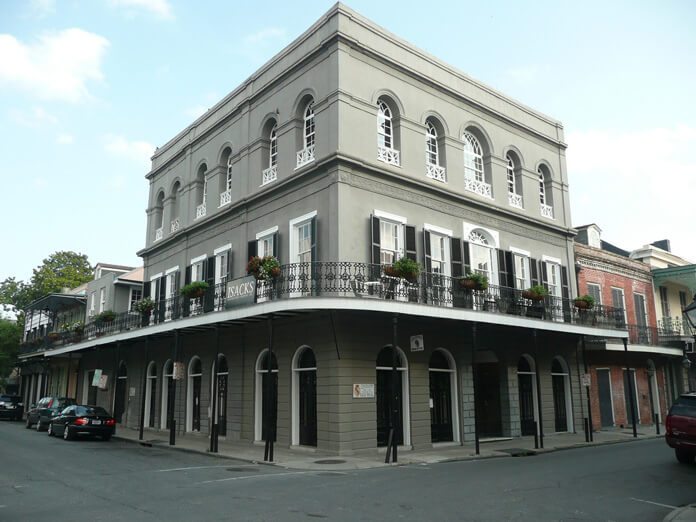
The LaLaurie Mansion, photo by Tom Bastin
For the rest of the country, things that go bump in the night move to the forefront of the imagination for one month out of the year. But in New Orleans, often called the most haunted city in America, every day might as well be Halloween.
Stroll through New Orleans on any given night, and you’re likely to encounter these things: an above-ground graveyard. A cobwebbed 18th-century mansion. A tour guide telling stories about the city’s haunted history. Here are just a couple of true tales from New Orleans’ haunted past.
Yellow Fever Epidemic in New Orleans, 1817-1905
Perhaps the most gruesome tableaus ever to unfold in New Orleans took place during yellow fever epidemics, which peaked in 1853 (7,849 deaths), 1858 (4,845 deaths), and 1878 (4,046 deaths), according to the New Orleans Public Library. All in all, 41, 000 souls would lose their lives to yellow fever in the 19th and early 20th century.
The mosquito-borne virus, a member of the Flaviviridae family, ravaged the populations of immigrants new to the city in particular. Individuals became infected when bitten by a mosquito carrying the virus, so it was easy for multiple members of a household to succumb to the disease. Headaches, muscle soreness, fever, and jaundice (hence the name yellow fever) were followed by liver and kidney failure, hemorrhaging, seizures, coma, and death.
Yellow fever cases peaked during warmer months, when mosquitos are most active, and for years, families who had the means to flee during the summers did so. During the worst epidemics, one out of every 10 people who stayed behind would die.
In 1853, more than a thousand people died each week. Obviously, civil services were not equipped to deal with mass deaths of that magnitude, but they did what they could. Each day, corpse wagons circled the neighborhoods, drivers calling “Bring out your dead.” Mass graves lined the city’s perimeter.
Fortunately, early 20th-century scientists figured out that if they controlled mosquito populations by limiting their breeding grounds, they could control the spread of disease. New Orleanians joined forces to close their cistern, drain stagnant pools and create underground sewage systems. After 1905, yellow fever never again ravaged the Crescent City… but it still exists in other parts of the world.
The LaLaurie Mansion (1114 Royal Street)
The LaLaurie house is well-known both within and beyond New Orleans’ city limits. Kathy Bates portrayed Delphine LaLaurie in an episode of American Horror Story, and haunted house attractions frequently include homages to the grisly tale.
LaLaurie enslaved African American people, and she was a notoriously cruel mistress. After a 12-year-old girl fled LaLaurie’s bullwhip in terror, falling off the roof and dying from her injuries, the authorities were brought in to investigate.
Because cruel treatment to slaves was prohibited by law, LaLaurie’s slaves were taken away from the house and sold at auction. Unfortunately, one of LaLaurie’s friends bought them and gave them back to her. Whether LaLaurie’s famous temper lead her to act out in vengeance toward the slaves, or whether she was simply insane, no one knows, but the worst was yet to come.
Visitors to the LaLaurie house became fewer and fewer, as rumors of her cruelty spread and damaged her reputation. In 1834, a cook intentionally set the house on fire, hoping that it would bring civic intervention (at best) or the relief of death (at worst). Behind a locked door on the third floor, firemen discovered a scene described thusly by The New Orleans Bee on April 11, 1834:
“Seven slaves, more or less horribly mutilated, were seen suspended by the neck, with their limbs apparently stretched and torn from one extremity to the other. These slaves had been confined by the woman LaLaurie for several months in the situation from which they had thus providentially been rescued, and had been merely kept in existence to prolong their suffering.”
Subsequent retellings of the story included even more perverse and graphic forms of torture, but the Bee account is the most reliable version. LaLaurie managed to escape, and an angry mob destroyed her home’s interior, smashing furniture and ripping out doors and railings before order was restored.
The gutted house sat sealed for years and eventually returned to the market. It was purchased by actor Nicolas Cage in 2007 and sold in 2008. Word on the street is that he never dared to spend a night there.
Are you planning to spend some time in New Orleans soon? To stay close to all the action, book a historic boutique hotel in the French Quarter at FrenchQuarter.com/hotels today!


